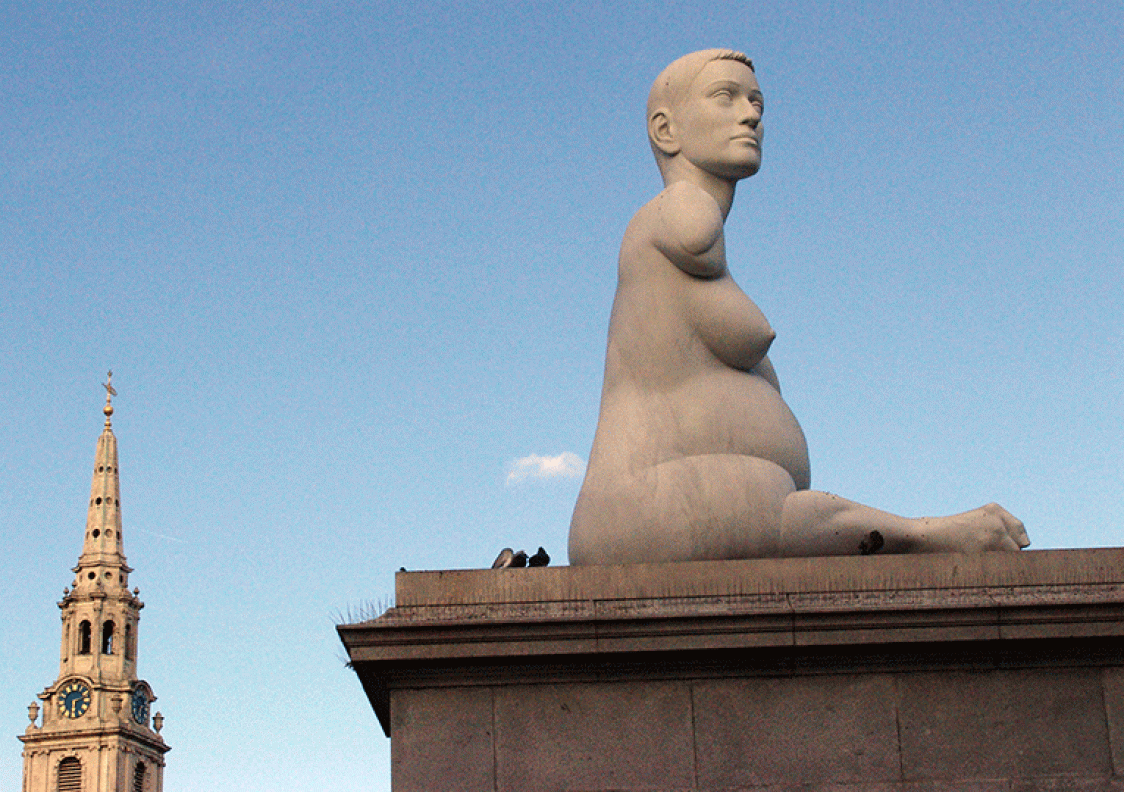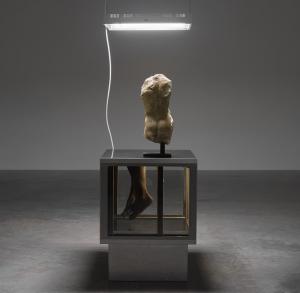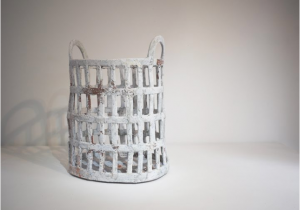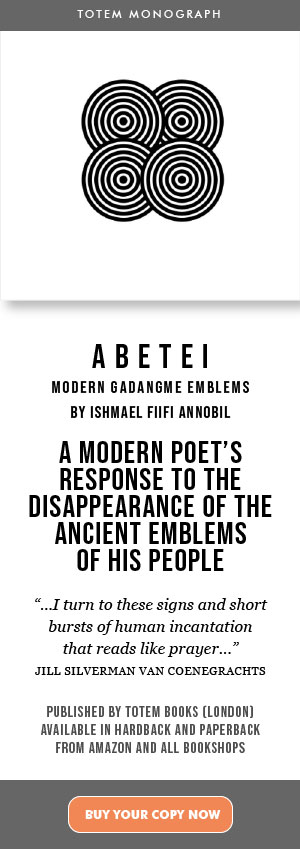ALISON LAPPER PREGNANT: ICON OF WOMANHOOD
Reviewed by Ishmael Annobil
Unlike other journalists, mine was a slow stroll. I had waited for the media dust to settle, especially the flippant statements of one particularly offensive critic. I finally got to Trafalgar Square’s fourth plinth on 17 April 2006, in the new sun. The fountain was playing its music as usual to refugees from bedlam, causing their focus to be elsewhere, apart from two tired souls catching their breath in the shadow of Alison Lapper’s statue. The pigeons, too, had taken to her aura, sidling up to her, as if to seek refuge from Mayor Ken Livingston’s anti-pigeon campaign.
Sculptor Marc Quinn's decision to use Alison Lapper as his candidate for the contested fourth plinth does not surprise me. He, too, is of my generation; a generation traumatised by the images of unholy history making and processes; the sort of things that make a poet of everyone, in lieu of direct childhood trauma. In other words, the modern artist has the potential to be the most eloquent. His/her idiom is replete with the language of mayhem and disadvantage, devoid of any notion of romantic frippery, and therefore more likely to say it as it really is – something ultimately more intelligent. This should clear away any classical notions of womanhood from Trafalgar Square’s plinth of modernity.
But the figure of Alison Lapper stands above any foreseeable contribution to this post-modern narrative, what with her inherent trauma. She was born with no arms and shortened legs due to a chromosomal condition called Phocomelia. Her mother had to abandon her to the whims of medical staff, whose loyalties lay with the eugenicists of Victorian England. The rejected child would however rise from the dank oblivion of care home to become a respected artist, become a mother, and ascend the podium of royalty with an MBE, in 2003. So then, if she is not the definitive symbol of womanhood, who is? Beyond that, there is the art itself, Marc Quinn’s rendition, that is.
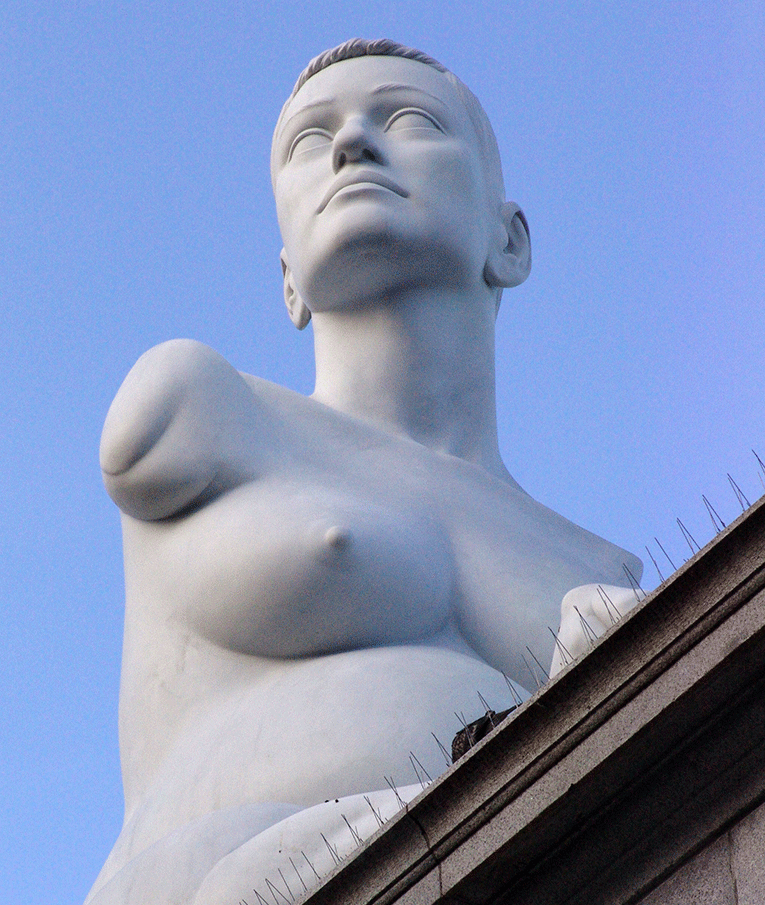
There is a sense of genuine majesty in the pose chosen by the artist, which undercuts, conclusively, the imperial grandeur of the imperial statuary of Trafalgar Square, except, of course, his ode is overlooked by amputee Nelson, forcing a rankling reconciling of two major human themes: military battle and societal battle. Many have made much of this connection between the two statues, as if to appease a conservative, imperial agenda, forgetting the fact that Marc Quinn’s work is indeed beyond the pale: it is of a pregnant disabled woman. If you approached this statue from behind, you would read its narrative proper: certainty. It bears no grudges, it is fears not what may lie behind it, and it makes you want to move fervently round to take a long look at its face.
On the surface Alison Lapper Pregnant references Venus di Milo, but this modern archetype is both cerebral and emotive. It redirects our admiration from the broken statue of a goddess to that of a ‘broken’ human being. The previously shunned image takes a stance and declares its human totality: its sentience, courage, defiance and beauty, as a work of nature. Suddenly, we are startled by our possible misanthropy. Henceforth, we have no choice but defer to life itself and not to romantic artifice. And yet Alison Lapper Pregnant is infinitely more romantic. Its acute truism makes it very alluring.
Crucially, the sense of amazement at the historical significance of this work soon shifts to a realisation that humans have finally grown up. Marc Quinn has cut the sod, he has established actualité in art, and so one hopes that this momentous statue stays in the public eye forever, everywhere.
Photos by Ishmael Annobil


